Expression is One’s Feedback to the World: Director Koji Fukada Reviews “Wendelien van Oldenborgh, unset on-set”
Koji Fukada at the “Wendelien Van Oldenborgh, Unset on-set” (Museum of Contemporary Art Tokyo) Photo by Tokyo Art Beat
The exhibition Wendelien van Oldenborgh, unset on-set is on view at the Museum of Contemporary Art Tokyo until February 19.
Wendelien van Oldenborgh, the leading contemporary artist from the Netherlands who represented the Dutch pavilion at the 2017 Venice Biennale, is known for her filmic works created in collaboration with performers. Often unscripted, her work captures people talking about specific issues, reflecting the subjectivity, perspectives, and relationships revealed by the process of interacting. The exhibition at the Museum of Contemporary Art Tokyo presents six works, including a new piece.
We asked film director Koji Fukada, who received critical acclaim for his film Love Life (2022) and worked on The Man from the Sea (2018) in Indonesia, to review the exhibition. Fukada is also an active member of the “Expression Field Research Group (Hyogen No Genba Chosadan),” dedicated to researching and educating the public about harassment and gender inequality in the art world.
The exhibition features pieces that touch upon the Dutch colonial history in Indonesia and Brazil, along with obsada, a work portraying the honest opinions of women working in the Polish film industry. How did Fukada interpret the works of Wendelien van Oldenborgh? The interview opened with a discussion of the difference between “images” in contemporary art and film and the difference between the two forms of expression.
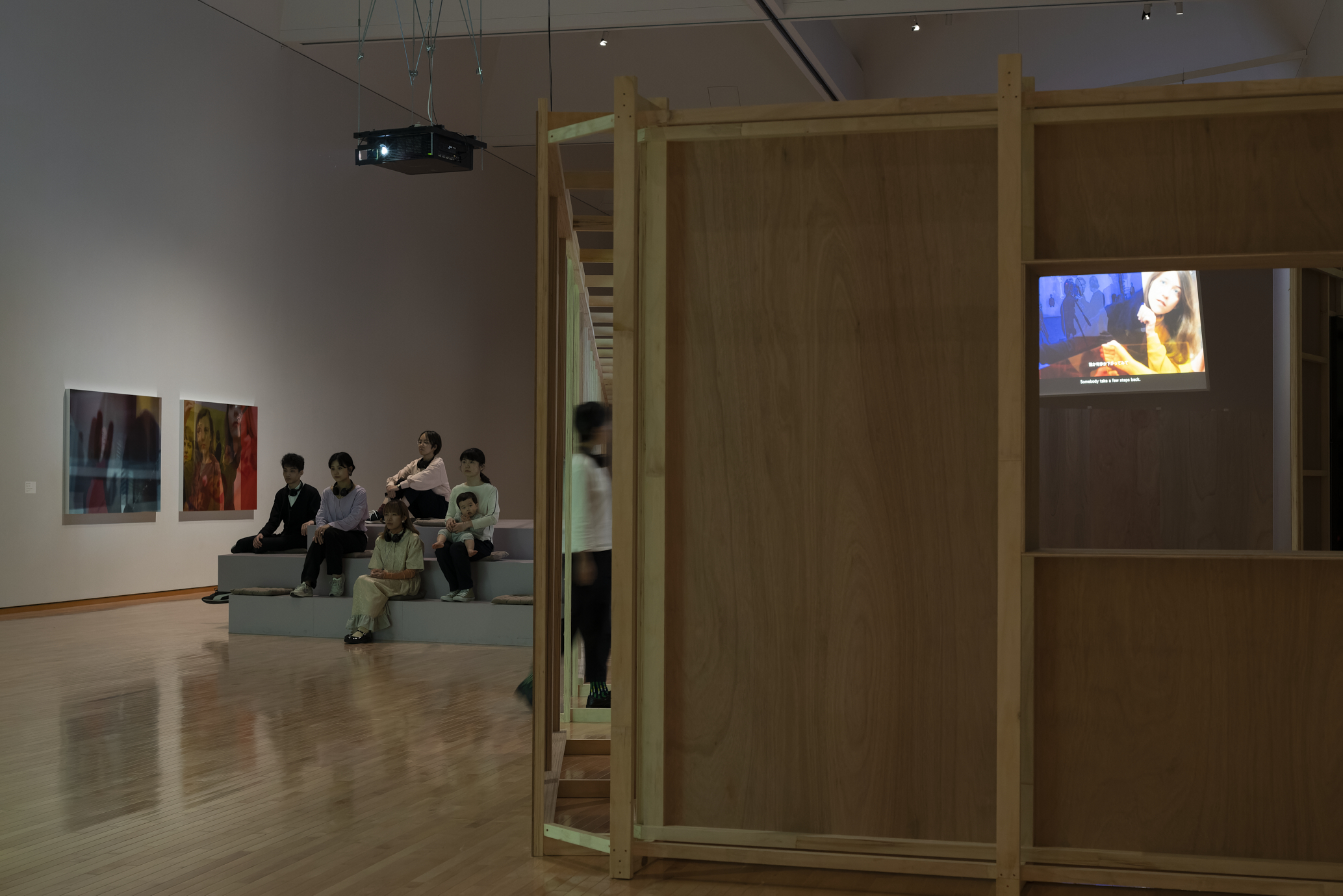
Images that do not serve the story
──To begin with, what is your overall impression of the Wendelien van Oldenborgh, unset on-set?
Fukada: The first thing that I find inspiring when I look at video works in the field of art is that I am reminded that film, a field in which I work, is only a tiny part of visual expression. There are certain rules that film has traditionally accumulated and a sense of what might be called “cinematic pleasure,” but this exhibition made me realize that distancing oneself from such things can be very exciting and enlightening.
There are different types of film, fiction, and documentary, but what I work with as an expression are so-called theatrical films, with a story, a script, a director, and actors playing the roles. In contrast, what makes Van Oldenborgh’s work so interesting is that not every image or cut is used to tell a story. Each image has some kind of value and is not just there to serve the story. It is quite fascinating to look at images that do not serve a specific narrative, including the context of what is being filmed and who is filming it. Although we want to, it’s not easy to achieve when working with images in the medium of film.
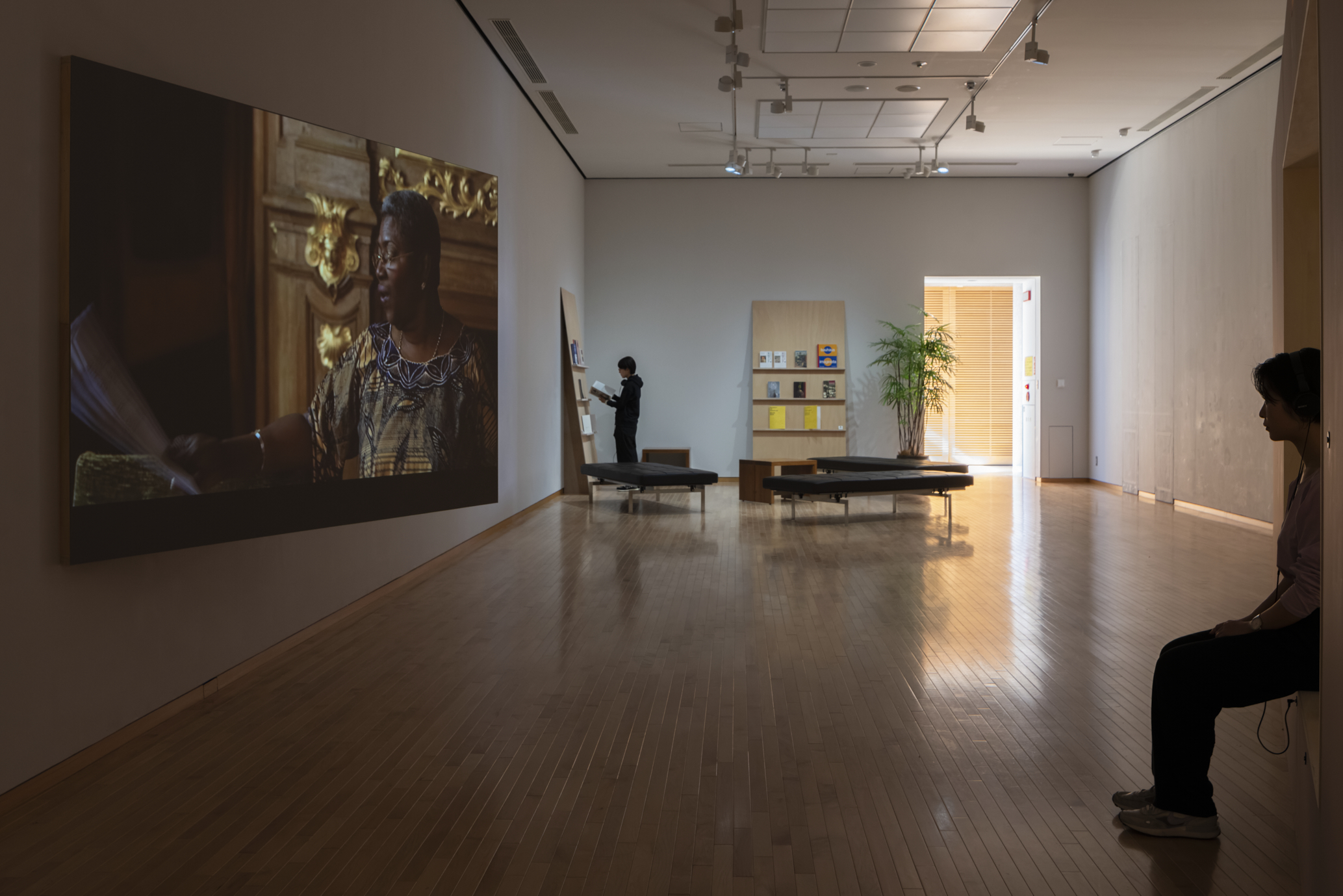
──Any particular piece caught your attention?
Fukada: The Maurits Script, filmed during a one-day public event dedicated to the history of the former Dutch colony in Brazil, was indeed an exciting work of art, as was the way it was displayed in the exhibition room. Two screens separated by a wall showed participants reading materials on one side, while the second screen showed a roundtable discussion with other participants.
It was interesting to see how the images on both sides were independent and yet influenced each other, unlike the connection between the film and the behind-the-scenes footage.
In addition, all the participants have different backgrounds and perspectives on the subject. Whether they were a tailor, a contemporary art theorist, a physicist, or a caregiver, each had a personal point of view. The involvement of such a diverse group of people in creating a single work of art is a challenge to achieve within the existing rules of cinema. I felt that the film industry must draw inspiration from such a creative process.
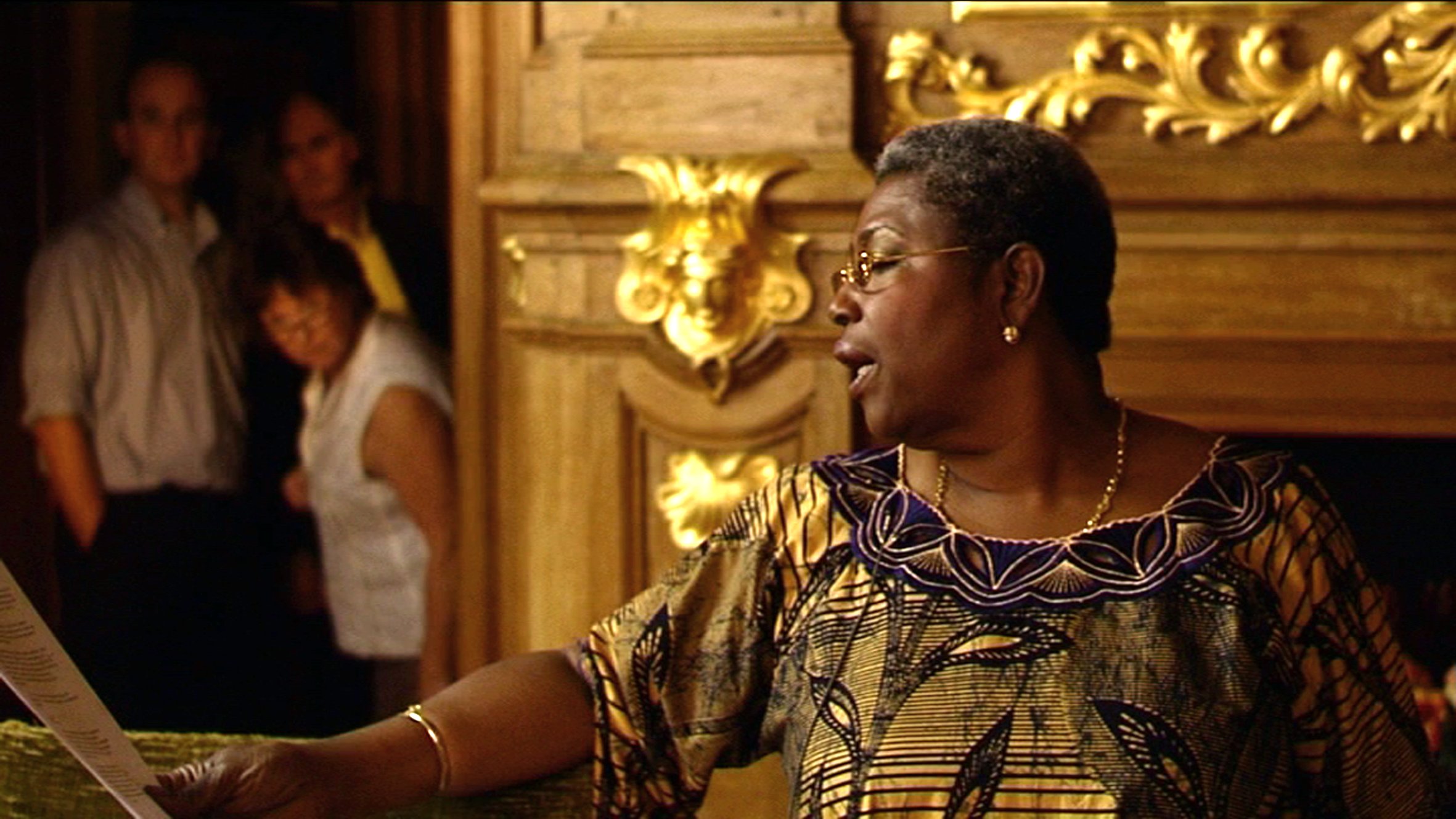
Along with the participants’ “tojisha-sei,” the “tojisha-sei” of the creator is equally important (※). I think this is something that all filmmakers need to take into account, whether they are artists or directors, and whatever their method of expression. In Van Oldenborgh’s case, the fact that she is Dutch is inseparable from how she confronts issues of Dutch colonial occupation in Brazil and Indonesia.
※ “Tojisha” (当事者) is a Japanese term that refers to a person who is directly involved in a situation, often as a participant, victim or concerned party. The word can be used in various contexts, such as legal, social, business situations, and art. Depending on the context, the term can also be translated as “identity,” “positionality” or “perspective.”
It may seem obvious that the creator must have such a sense of awareness, but in fact, the work and the positionality of the creator are often separated in many expressions. Although it is a slightly different context, when issues of harassment by an artist come to light, we often hear the phrase “art is innocent,” but I wonder if that is really the case. I think it is something that cannot be easily separated. And works that adequately address this aspect are, in my opinion, more inspiring.
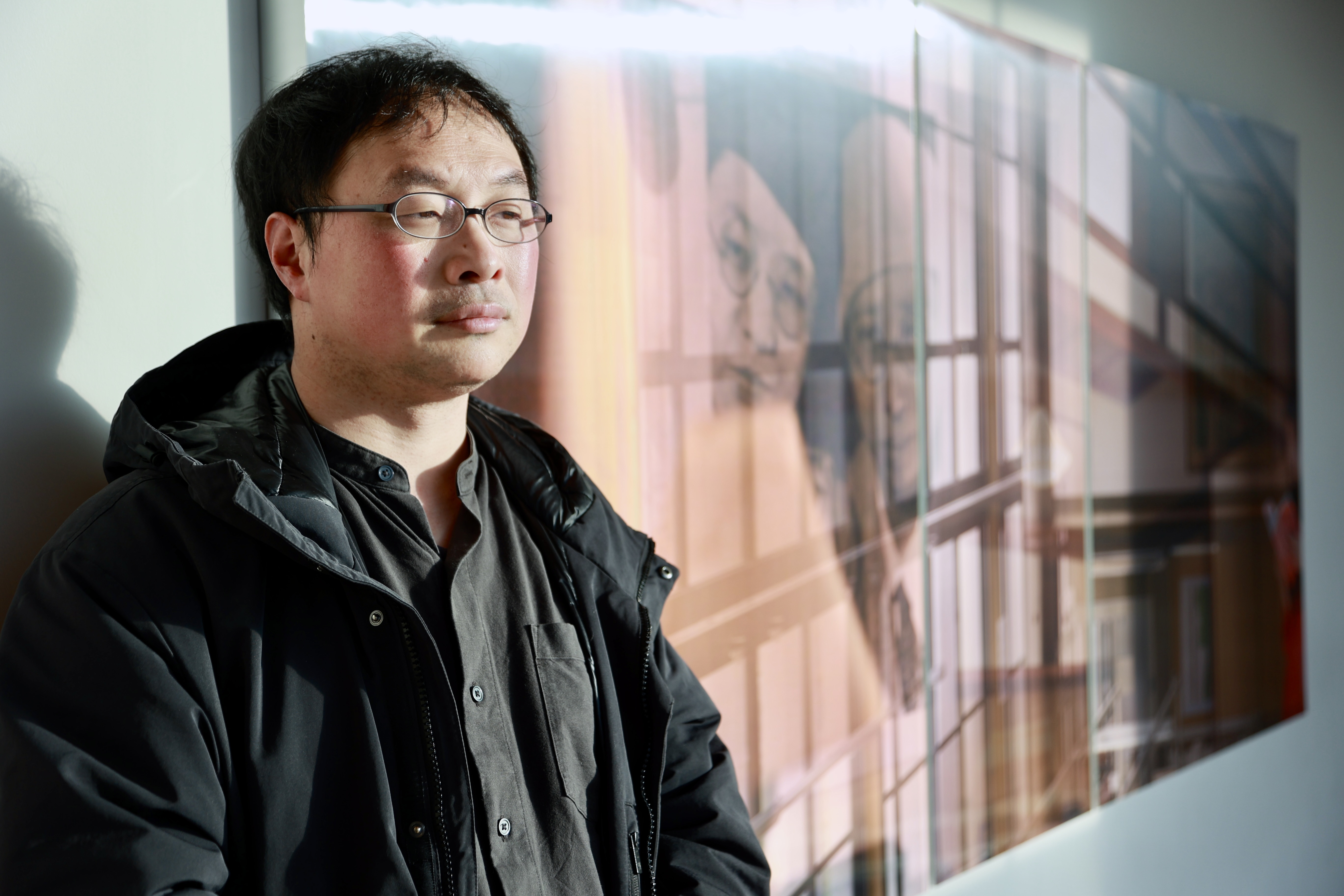
We cannot escape the influence of our positionality
──I think that “tojisha-sei” is an essential keyword. Are you conscious of your positionality and identity?
Fukada: Rather than being conscious of it, I believe that it is something one cannot escape and cannot pretend to be unaware of. I first developed this idea after reading What Is History? by Edward Hallett Carr as a university student. To summarize roughly, it says there is no such thing as objective historical truth, and all history is simply narrative told through the filter of the historian’s subjective. No matter how hard they try to be objective, historian cannot escape their history, gender, nationality, ethnicity, or other attributes, and I found this to be very enlightening. Being born and raised in Japanese society, speaking Japanese, being a cisgender male, being heterosexual, and including my philosophical and religious beliefs, my expression has always been under the influence of such attributes.
Later, these feelings grew stronger when I started making films and confronting the world with my camera. For example, making a film about family reveals one’s perception of it and inevitably raises the question of how to deal with patriarchy. The portrayal of the world without a sense of conflict between ourselves and the expression can spread unconscious stereotypes formulated by lifestyle and habits, such as images of a male-dominated society. I am always aware that moving images can be easily distributed in society and unintentionally contribute to the fixation of stereotypes.
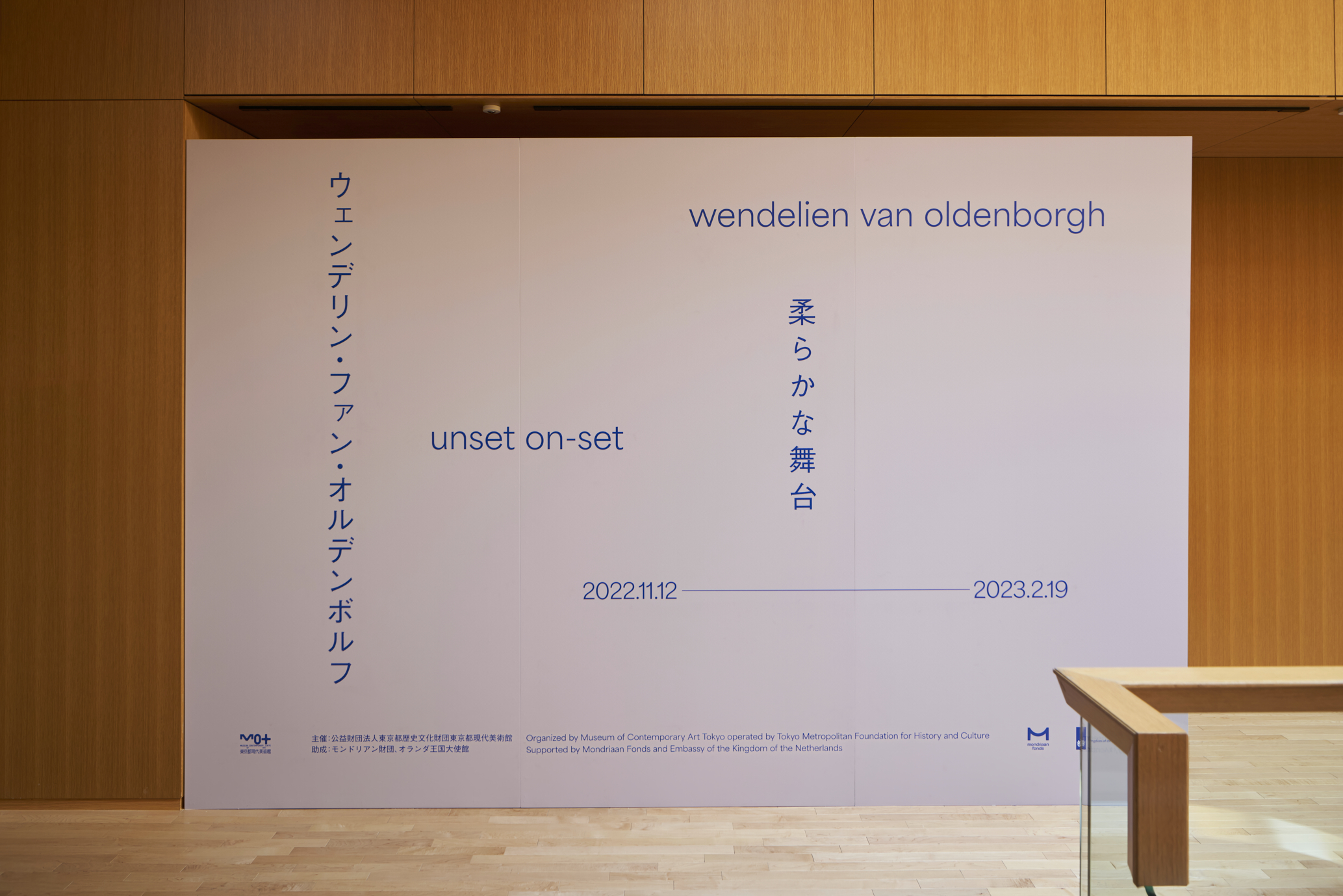
──Your film The Man from the Sea was co-produced by Japan, France, and Indonesia. It was filmed in Indonesia and featured actors of different backgrounds performing in Indonesian. The film makes subtle references to the Dutch and later Japanese occupation of Indonesia and the presence of the Japanese military.
How did you address your identity when making a film with such a diverse cast and team?
Fukada: Before working on The Man from the Sea, I had the opportunity to screen my other works in Indonesia. On that occasion, I was struck by my encounter with a university student who organizes screenings in various regions of Indonesia with no movie theatres. She asked me point-blank during our post-screening discussion, “Does Japan properly educate people about the harm caused to Indonesia during the war?”. In reality, Japan does not adequately educate its citizens about the damage done during the war, and only the image of Indonesia as a pro-Japanese country is widespread. Many Indonesians like Japan, but there are still remnants of the assimilation policy and the lingering trauma of forced labor.
You cannot avoid confronting the fact that you are Japanese and Indonesian history when you are shooting a film in Indonesia. I cannot confront this history as an objective outsider; instead, I must confront it as a Japanese who was once on the side of the aggressors. I think I did the best I could within the film genre with The Man from the Sea. But when I saw this exhibition, I also felt a bit of envy, realizing that it had reached a point beyond the reach of conventional cinema.

──What are your thoughts on the positionality portrayed in this exhibition?
Fukada: No False Echoes, for example, was filmed in a former radio station used for broadcasting at the time, recalling the history of radio broadcasts as part of colonial policy in the Dutch East Indies (present-day Indonesia). This piece reminded me that places and buildings can have the same identity and positionality as people. In cinema, the actual history of the building seen on the screen is not necessarily important, nor is the fact that the film was shot in the exact historical location. There is no hesitation in making something “look like it,” and regardless of whether it is good or bad, it is the art of “creating a lie.” This is exactly the case with the film set in the studio.
In Van Oldenborgh’s work, on the other hand, the representation of the building and its history as a participating actor with an identity is very important.

Gender gap in the film industry
Fukada: obsada, a piece featuring women working in the Polish film industry filming each other, was another piece in which women’s identity played a significant role. I am a member of the “Expression Field Research Group (Hyogen No Genba Chosadan),” and our survey has shown a large gender gap in the Japanese film industry. All fields of expression are currently male-dominated, but I think this is especially true in fields with a strong sense of collectivity, such as film and theater. This is especially true in the case of film, which requires a large production budget and is therefore easily subject to the limits of capitalism, which in turn leads to conservatism.

The first thing that comes to mind when watching obsada is the difficulty women face at work in the film industry and the extent of oppression by a male-dominated society, but it is also interesting that this work does not only show the result, but the production process is the part of it too. In other words, the crew members involved in the filming were deliberately chosen for their identities, and we, the viewers, get to know them through their work. The production process itself is a work of art, documented as one of the representations of gender roles. I found the range and depth of this piece quite fascinating.
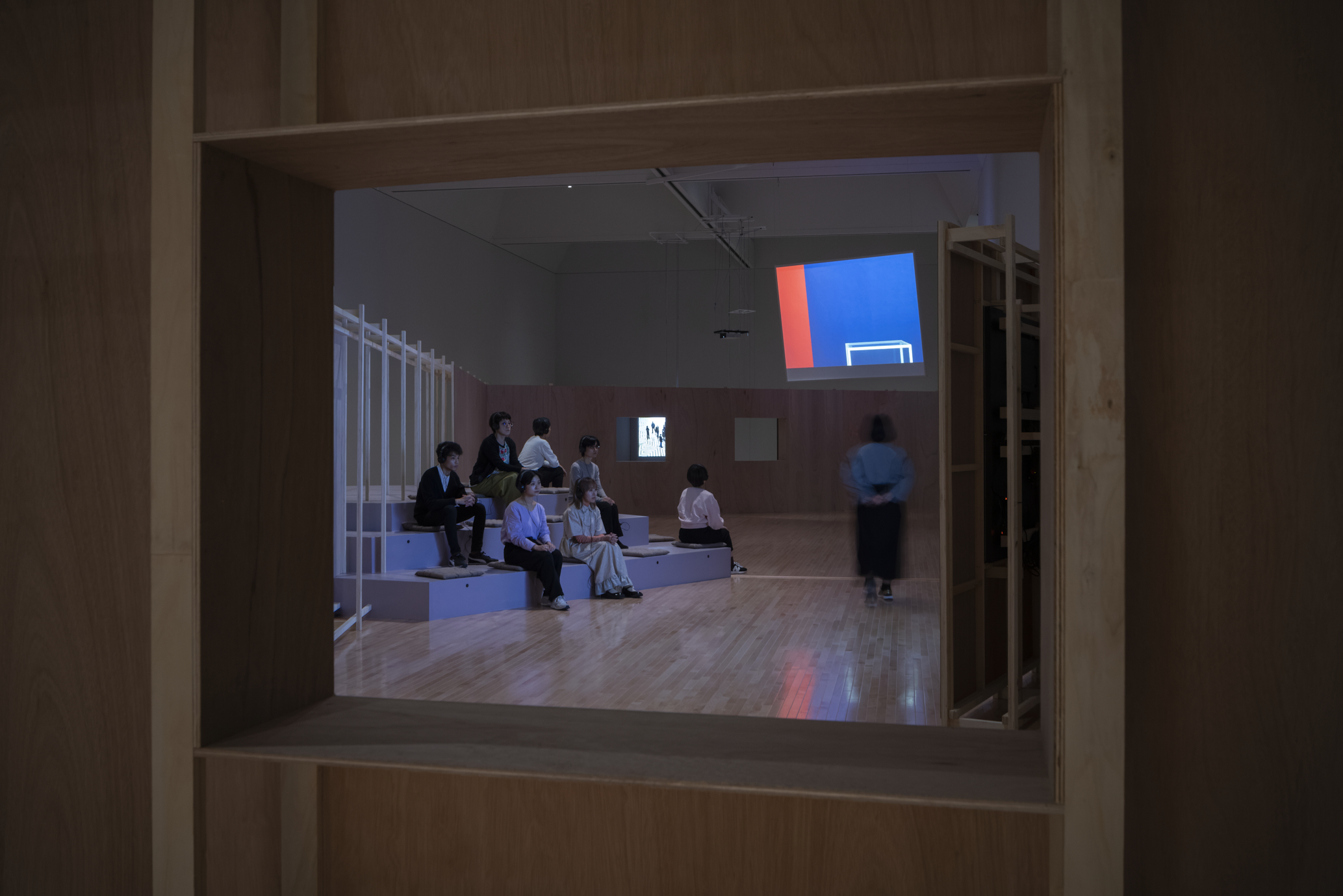
Film is a window to the world
── What did you think about the latest work of girls, which was filmed in Japan?
Fukada: I briefly mentioned cinematic pleasure earlier, and this piece, in particular, made me think about it. One of the writers who has influenced me the most, Taeko Tomioka, once said, “When we attempt a new form of expression, we must distance ourselves from the pleasures we once enjoyed.” And when I look at moving-image works produced in the art field, I can really understand the meaning of it. How the screen is divided into two parts, yet connected by a gradation, is unique and exciting because even if you had the idea, it would take a lot of courage actually to do it in conventional cinema. Yukiko Iioka’s cinematography was also excellent. This piece was inspired by two writers, Fumiko Hayashi, and Yuriko Miyamoto. As I mentioned earlier, while all fields of expression are male-dominated, I felt it was particularly important to focus on two female writers who were both pioneers in the field of literature.
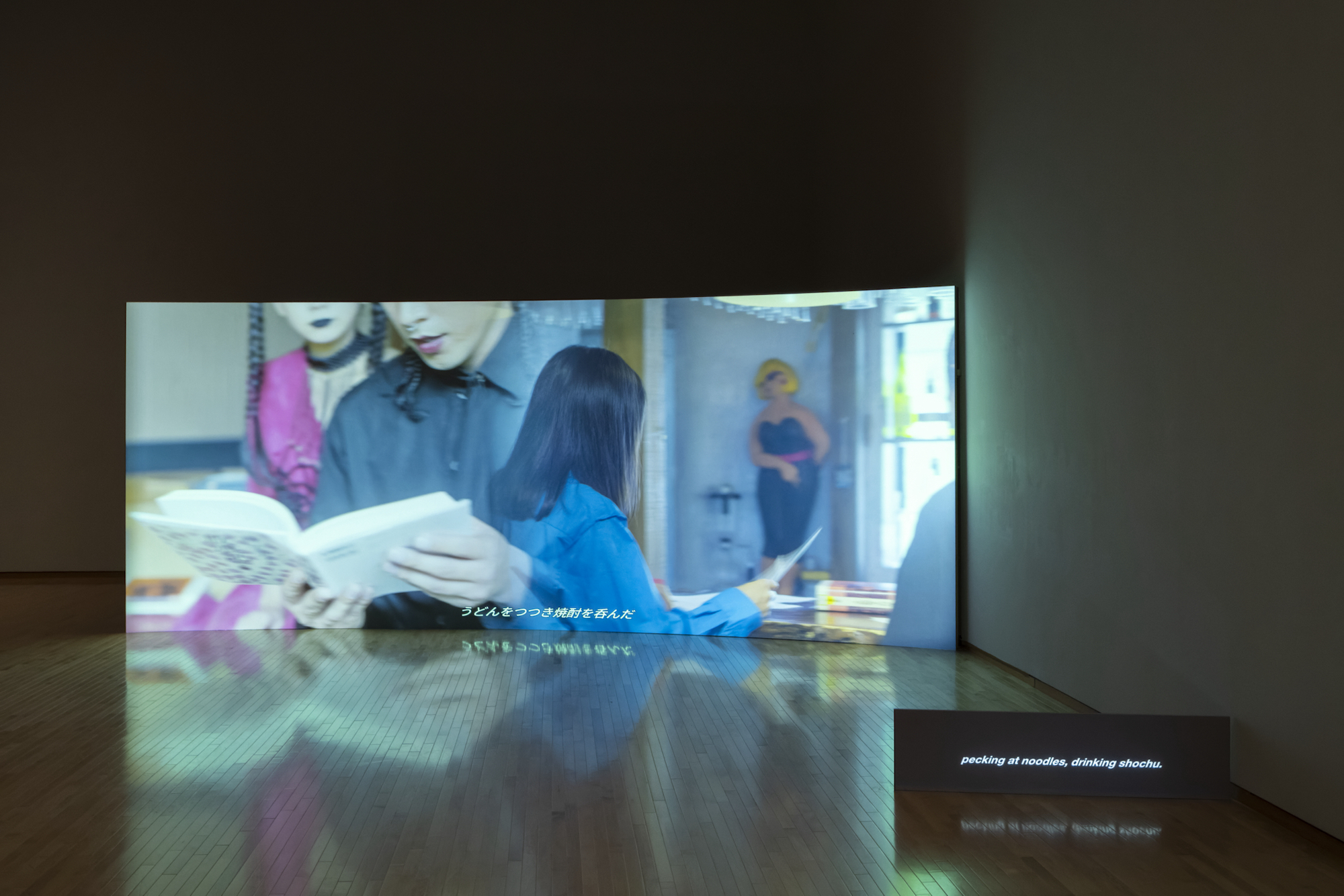
── of girls was filmed in Japan, and No False Echoes explores the colonial history and complex relationship between Japan, the Netherlands, and Indonesia. I think Japanese audiences will perceive these works differently from audiences in other locations. What do you think about the relationship between the location, the audience, the work’s theme, and the artist’s background?
Fukada: Expression is one’s feedback to the world, an act of throwing it into the world of someone else somewhere. That is why I believe a work of art always has a two-way context involving the creator and the audience. In Japan, some people believe that the Japanese saved Indonesia from Dutch colonization. I believe this was simply a change of power and that the Japanese occupation of Indonesia cannot be easily justified. As someone who lives in Japan and has made films in Indonesia, I could find a connection between myself and this exhibition through that history. But the themes addressed in this exhibition, including colonialism, patriarchy, and gender inequality, are things we all face no matter where we live in the world, and I think everyone can find something to connect with.
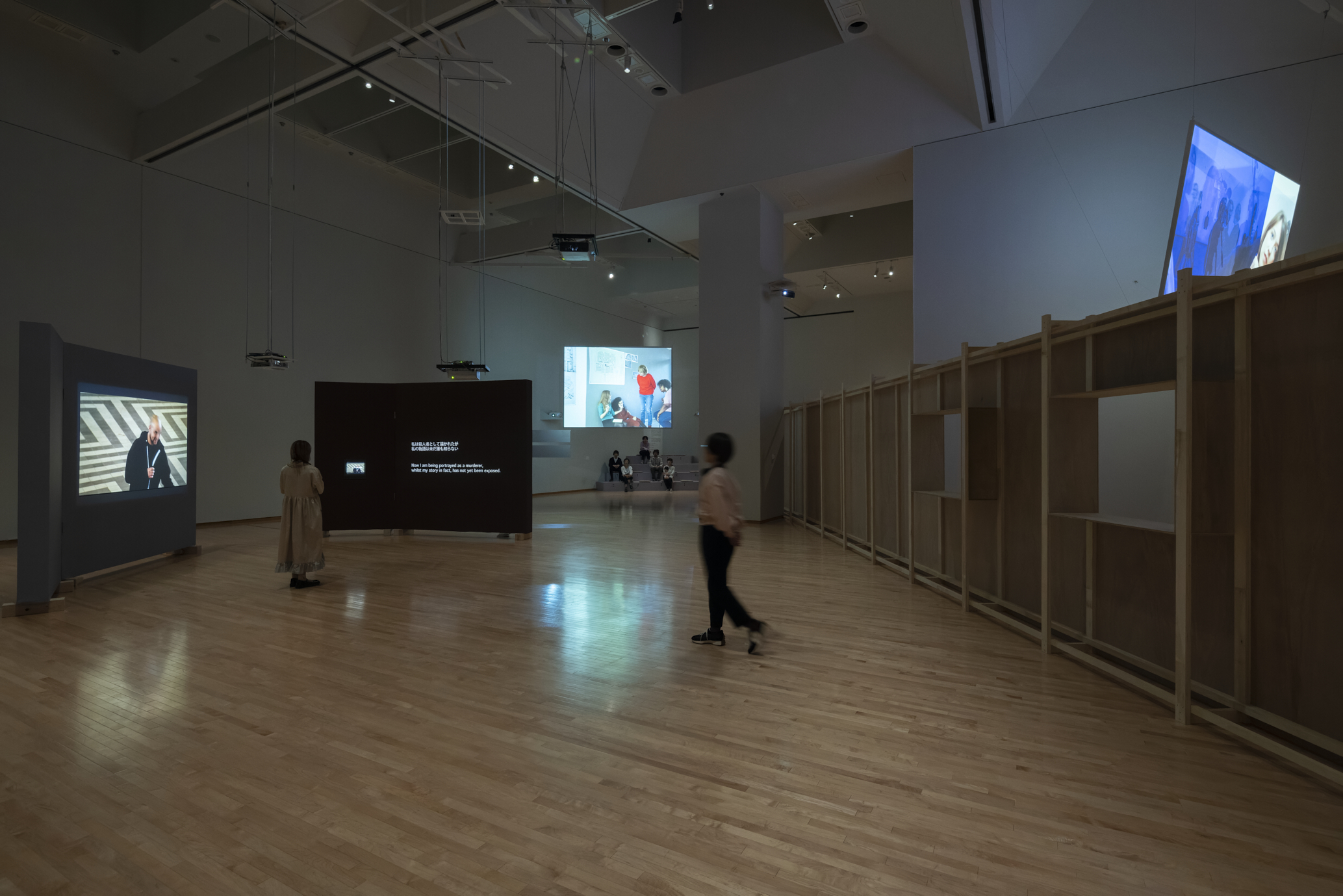
Although it may sound like the opposite of what I just said, the role of art is not to provide the audience with a sense of connection and empathy. I think moving image is a very important medium that can expose you to things you don’t know or understand. Since the Lumière brothers invented cinema at the end of the 19th century, the visual expression has been a window to the world. I think that remains true, whether it is YouTube or TikTok. I also discovered many things through this exhibition that I did not know. Even if there are parts of the exhibition that you might not understand, I hope people will still come and see it because there are many things to explore here. I sound like a PR agent [laughs]. I would love to come back and see the exhibition while it is still on.



